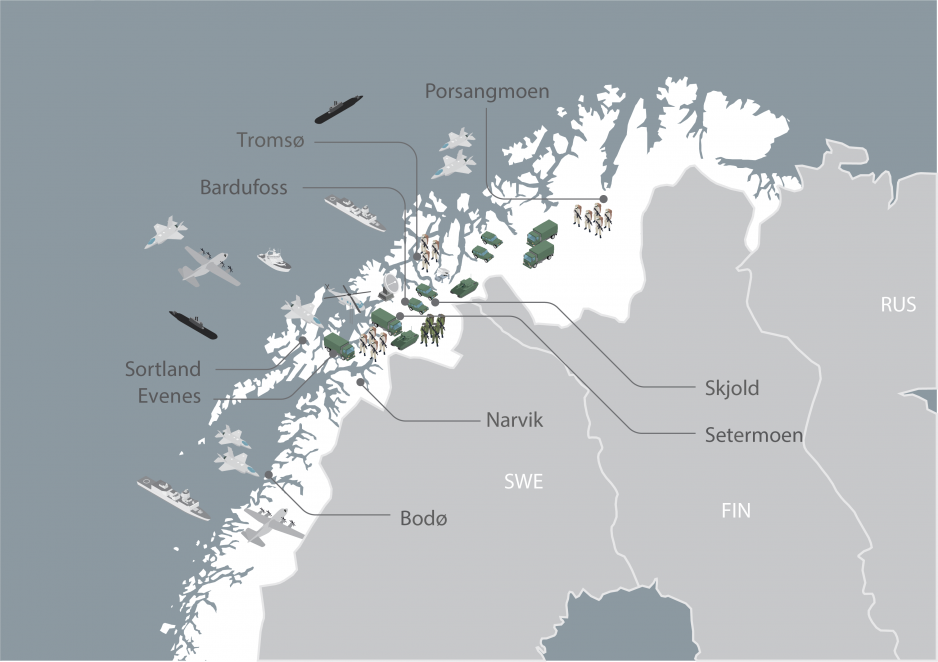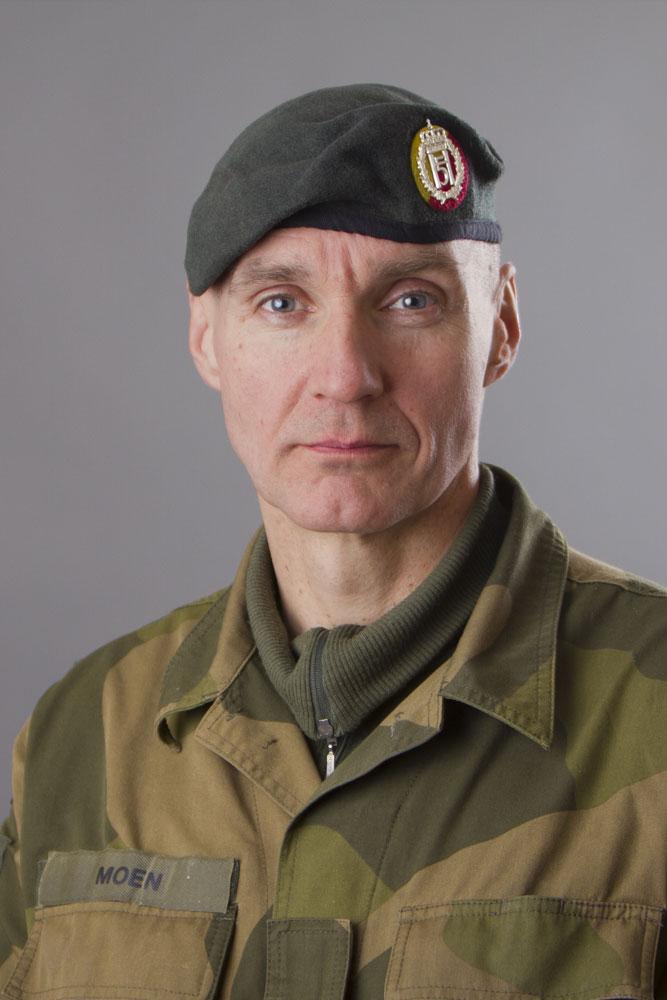Cold Response 2020 Exercise is On

Training area for Cold Response 2020. Illustration: Norwegian Armed Forces
NATO’s winter exercise Cold Response 2020 is on as of this week. The exercise takes place from Bodø to Porsangmoen between 2-18 March. According to the Norwegian armed forces, the exercise is to secure NATO’s ability to conduct multi-national joint operations in demanding winter conditions.
Some 16,000 soldiers from 10 different countries participate in the exercise. It has contributions from the USA, Great Britain, Germany, France, the Netherlands, Belgium, Denmark, Finland, Sweden and Norway. In addition to practicing fighting under winter conditions, the exercise is to focus on amphibic warfare. The exercise was originally to have more American troops; however, some 3,000 soldiers were instead reassigned to the Middle East.
Fictitious scenario
Lieutenant Colonel Ivar Moen, Senior Spokesperson at the Join Operation Headquarters in Norway, warns against believing that the exercise is aimed against a particular country.
“We should be careful not to confuse this exercise with a real scenario. The exercise builds on a fictitious scenario. The scenario is built to achieve training targets on a tactical level. One is trying to create realistic forms of training, of course, but realism in the form of a security policy situation is something quite different”, he says.
“The scenario on which this exercise builds has been created to achieve maximum training outcomes for the participating divisions and forces, as their emphasis is on a tactical level, i.e. soldiers on the ground”, Moen says to High North News.
What signal does NATO wish to send with this exercise?
“I can only speak on behalf of Norway. Norway, as a host nation, believes these exercises to be vital. First of all, we have conducted winter exercises in Norway for years and years. We are experienced, we are well prepared, and we know how to do winter exercises. As for Norway as a nation holding winter competence, we are in the lead in this area within NATO, so it is both right and important for Norway to be the host nation for exercises like this. Thirdly, it is important to allow our allies to get the winter competences that makes all together a credible defense.”
“If our allies are to assist us in a potential crisis situation, they must have the winter skills needed to operate in the areas where they are meant to be. That allows us to have a credible defense”, he says.
What reactions do you expect from Russia?
“We are fully transparent when it comes to these exercises, as we are every year. The High North depends on predictability and stability, and we do our part of that job through being transparent and reporting through the relevant control regimes in place, a.o. through the so-called Vienna document, where we inform about the number of forces and the amounts of materials used in various periods. We do our share of the job with maintaining transparency and predictability that contributes to a long-term and stable situation in the High North”, Moen says.
He further says that experience shows that the exercises conducted by Norway and NATO draw some attention from the Russian side, and says they are in their full right to operate in the areas they do, i.e. in international airspace and international waters. “We will just have to wait and see to find out what the Russian reaction will be this year”, he says in closing.
Receives attention in Russia
Senior Researcher Julie Wilhelmsen at NUPI says this is an exercise that receives attention in Russia.
“For the past five to six years, Russia has dedicated much attention to everything going on in the High North. When other NATO countries participate in exercises on Norwegian soil, we have seen statements from Russian officials that pay a lot more attention to Norway for this kind of activity, and there has been a pattern of rather angry response from the Russian side”, she says. “They perceive this kind of activity to be a threat to Russia and draw a kind of image of the West being about to surround them and that the West contributes to militarizing the Arctic”, she says to High North News.
They perceive this kind of activity to be a threat to Russia
How do you believe Cold Response 2020 will affect the relationship between Russia and Norway?
“Even though Norway have these exercises with an expressed defensive intention, Russia has a tendency to ascribe them an offensive intention”, she says.
Wilhelmsen points out that in the wake of exercises such as e.g. Trident Juncture, we have seen Russia responding in accordance with its own narrative about being threatened by conducting measures from the its own side.
NATO wants deterrence
What signal does NATO want to send with this exercise?
“NATO’s increasing activity is about sending a message of deterrence. From the Norwegian side, such an exercise is meant to signal that one should not attack Norwegian territory”, Wilhelmsen says in closing.
Cold Response 2020 lasts for two weeks. The main part of the exercise takes place in the period 12 – 18 March, according to the Norwegian Armed Forces’ web site.
This article was originally published in Norwegian and has been translated by HNN's Elisabeth Bergquist.



